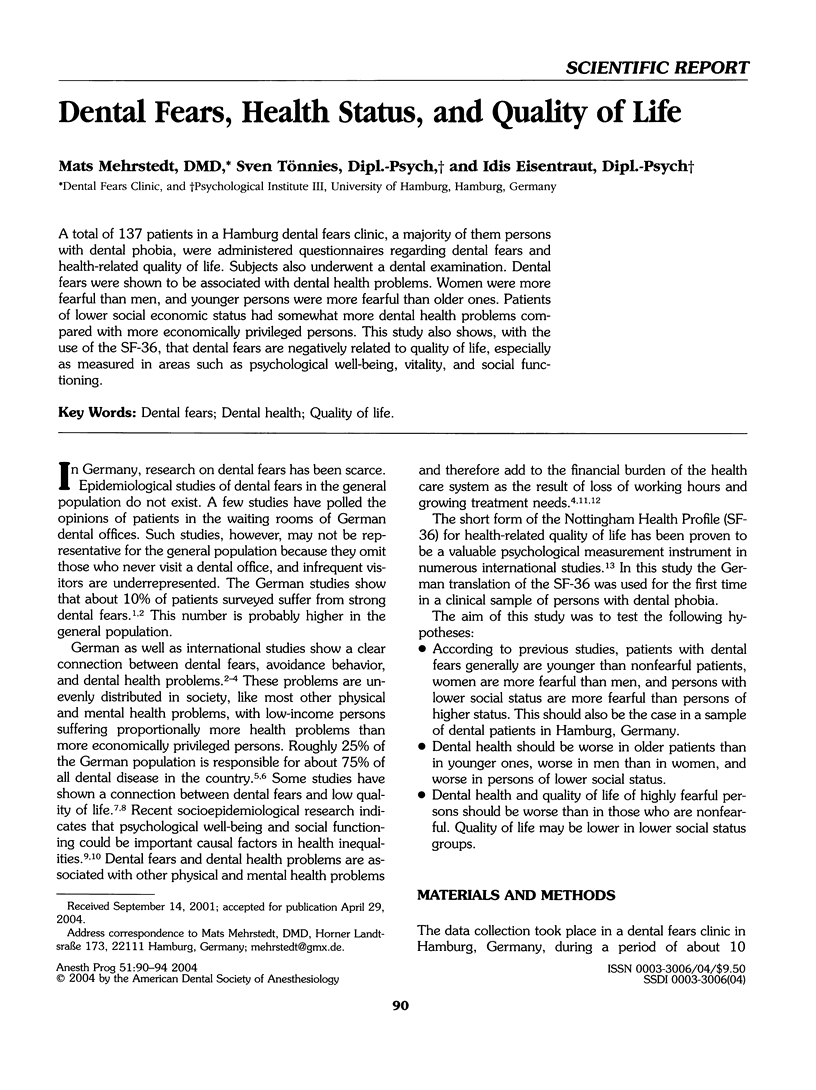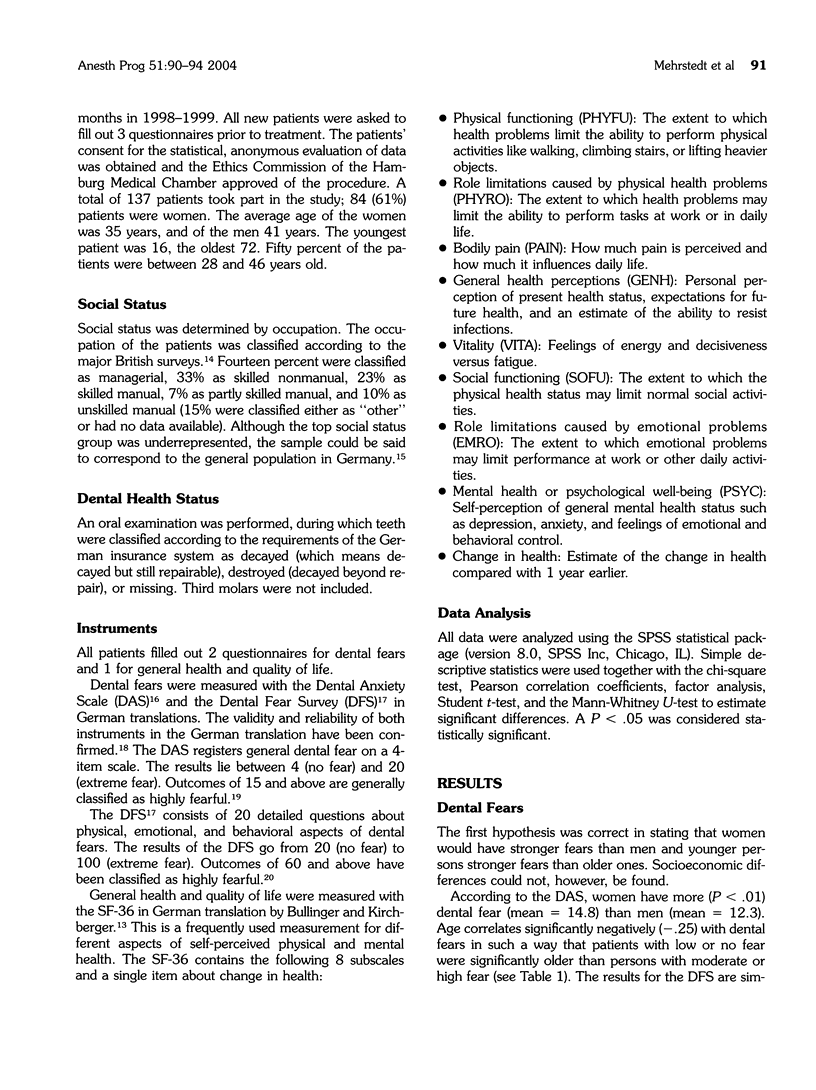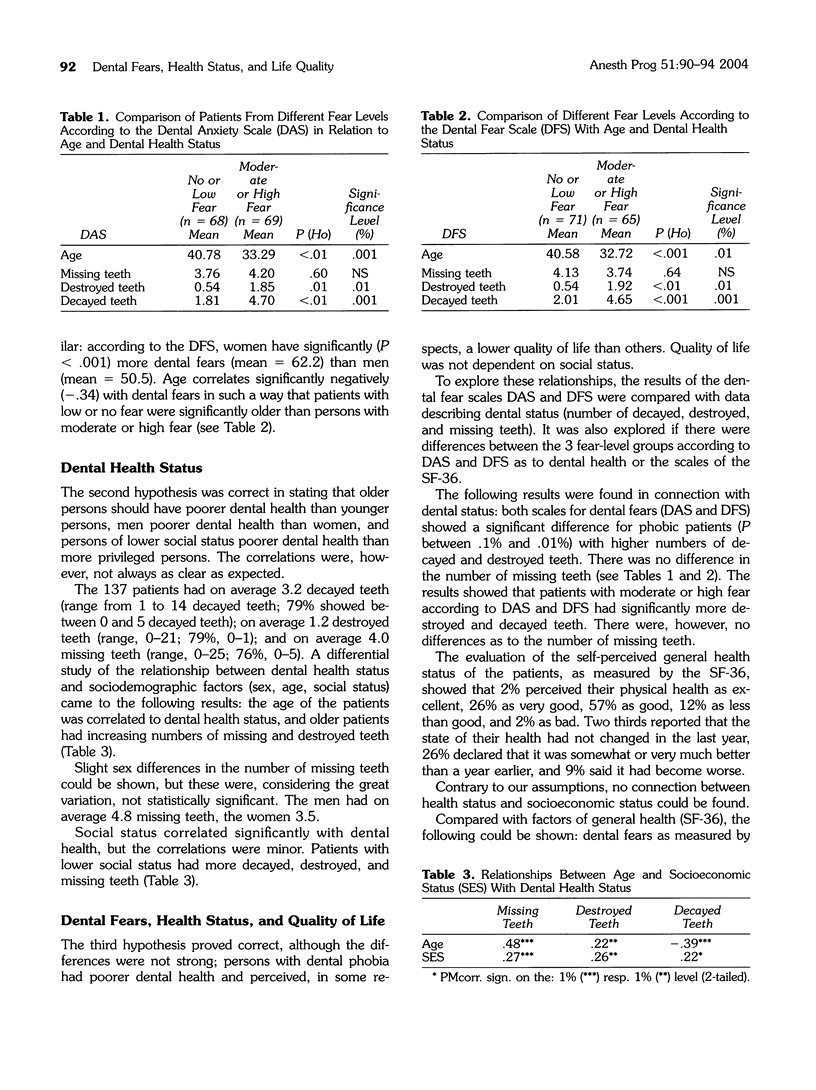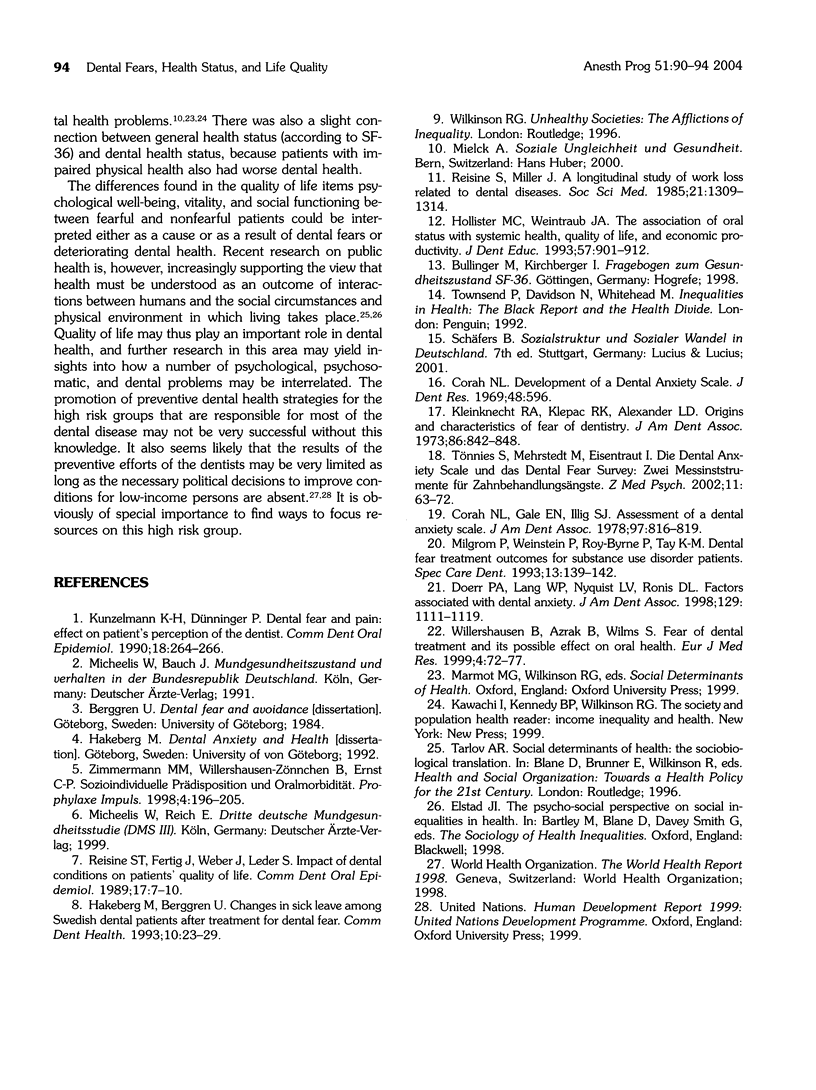Abstract
A total of 137 patients in a Hamburg dental fears clinic, a majority of them persons with dental phobia, were administered questionnaires regarding dental fears and health-related quality of life. Subjects also underwent a dental examination. Dental fears were shown to be associated with dental health problems. Women were more fearful than men, and younger persons were more fearful than older ones. Patients of lower social economic status had somewhat more dental health problems compared with more economically privileged persons. This study also shows, with the use of the SF-36, that dental fears are negatively related to quality of life, especially as measured in areas such as psychological well-being, vitality, and social functioning.
Full text
PDF




Selected References
These references are in PubMed. This may not be the complete list of references from this article.
- Corah N. L. Development of a dental anxiety scale. J Dent Res. 1969 Jul-Aug;48(4):596–596. doi: 10.1177/00220345690480041801. [DOI] [PubMed] [Google Scholar]
- Corah N. L., Gale E. N., Illig S. J. Assessment of a dental anxiety scale. J Am Dent Assoc. 1978 Nov;97(5):816–819. doi: 10.14219/jada.archive.1978.0394. [DOI] [PubMed] [Google Scholar]
- Doerr P. A., Lang W. P., Nyquist L. V., Ronis D. L. Factors associated with dental anxiety. J Am Dent Assoc. 1998 Aug;129(8):1111–1119. doi: 10.14219/jada.archive.1998.0386. [DOI] [PubMed] [Google Scholar]
- Hakeberg M., Berggren U. Changes in sick leave among Swedish dental patients after treatment for dental fear. Community Dent Health. 1993 Mar;10(1):23–29. [PubMed] [Google Scholar]
- Hollister M. C., Weintraub J. A. The association of oral status with systemic health, quality of life, and economic productivity. J Dent Educ. 1993 Dec;57(12):901–912. [PubMed] [Google Scholar]
- Kleinknecht R. A., Klepac R. K., Alexander L. D. Origins and characteristics of fear of dentistry. J Am Dent Assoc. 1973 Apr;86(4):842–848. doi: 10.14219/jada.archive.1973.0165. [DOI] [PubMed] [Google Scholar]
- Kunzelmann K. H., Dünninger P. Dental fear and pain: effect on patient's perception of the dentist. Community Dent Oral Epidemiol. 1990 Oct;18(5):264–266. doi: 10.1111/j.1600-0528.1990.tb00073.x. [DOI] [PubMed] [Google Scholar]
- Milgrom P., Weinstein P., Roy-Byrne P., Tay K. M. Dental fear treatment outcomes for substance use disorder patients. Spec Care Dentist. 1993 Jul-Aug;13(4):139–142. doi: 10.1111/j.1754-4505.1993.tb01464.x. [DOI] [PubMed] [Google Scholar]
- Reisine S. T., Fertig J., Weber J., Leder S. Impact of dental conditions on patients' quality of life. Community Dent Oral Epidemiol. 1989 Feb;17(1):7–10. doi: 10.1111/j.1600-0528.1989.tb01816.x. [DOI] [PubMed] [Google Scholar]
- Reisine S., Miller J. A longitudinal study of work loss related to dental diseases. Soc Sci Med. 1985;21(12):1309–1314. doi: 10.1016/0277-9536(85)90433-2. [DOI] [PubMed] [Google Scholar]
- Remaury Anne, Vita Natalio, Gendreau Sylvain, Jung Mireille, Arnone Michelle, Poncelet Martine, Culouscou Jean-Michel, Le Fur Gérard, Soubrié Philippe, Caput Daniel. Targeted inactivation of the neurotensin type 1 receptor reveals its role in body temperature control and feeding behavior but not in analgesia. Brain Res. 2002 Oct 25;953(1-2):63–72. doi: 10.1016/s0006-8993(02)03271-7. [DOI] [PubMed] [Google Scholar]
- Willershausen B., Azrak A., Wilms S. Fear of dental treatment and its possible effects on oral health. Eur J Med Res. 1999 Feb 25;4(2):72–77. [PubMed] [Google Scholar]


